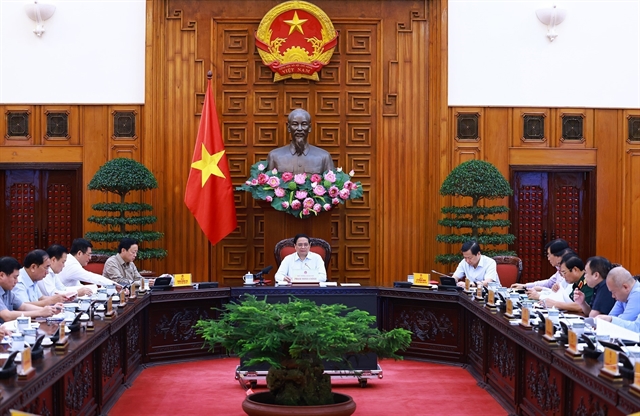 Op-Ed
Op-Ed

Floriane Ortega, Regional and Urban Planning Officer of Asconit Consultants talks about Hà Nội's updated Master Transport Plan.
By Floriane Ortega - Regional and Urban Planning Officer of Asconit Consultants
HÀ NỘI – Before ending his term as Prime Minister early this month, Nguyễn Tấn Dũng approved the update of Hà Nội’s Master Transport Plan for 2030, endorsing the development of eight Bus Rapid Transit (BRT) routes. The population of Greater Hà Nội is forecast to grow to 7.44 million by 2020 and around 9.5 million by 2030, according to the 2010 Master Construction Plan backing up the decision to further invest in public transport infrastructure.
These demographic forecasts along with the trend to motorisation Việt Nam is already putting the existing road infrastructure under pressure in addition to causing major public health issues. The numbers speak for themselves: in 2008, more than 80 per cent of journeys were made by motorbike and scooter in the metropolitan area of Hà Nội. If the share of cars at that time accounted for a minority of trips - 3 per cent in 2008 - and is still used by a negligible number of commuters today, it has seen the highest growth rate in the number of trips made between 2005 and 2013 among all transport modes.
One result is the alarming and increasingly high-level of pollution the city. Last month on the 1st of March, the air quality monitoring system of the US Embassy recorded hazardous levels of PM2.5 particles - the fine particles believed to pose the greatest health risks - close to the Van Phuc diplomatic compound. The PM2.5 level was indeed 11 times higher than the maximum standard prescribed by the World Health Organization, a standard which is already associated with “a 15 per cent higher long-term mortality risk relative to the Air Quality Guidelines level.”
The salience of the issue has worried Hà Nội local authorities for a while. With the growing traffic congestion, it is another factor which had pushed the city to develop a proper public transport system for Hà Nội. Thus, since the start of the decade and with the support of international donors, the city has invested in a massive urban public transport system.
Public transport in Hà Nội today, which only consists of a bus service, only accounts for less than 9% of trips. Hà Nội’s Transport Plan has an ambitious target to increase the public transit share to over 40% by 2020 and 60% by 2030. However with years of delays surrounding the metro project, these targets will most likely be out of reach.
The first operational line, Hà Đông line (line 2A), developed with the financial assistance of China will not open before 2018, while the Nhổn–Hà Nội Railway Station line (line 3) financed by four different international donors will not be ready before 2020. On top of this, until a proper network of lines can be built, the metro is unlikely to meet its full passenger capacity.
In the meantime, alternative solutions should be thought out and implemented. Some initiatives are being implemented directly by the private sector. By next June, we will see 100 new electric vehicles circulating in the cities of Việt Nam, as the taxi company Mai Linh, has recently signed off on purchasing these vehicles from the French carmaker Renault. A combination of factors have pushed Việt Nam’s most popular taxi company to go for greener policies: the reasonable price of the car (US$29,000), competitive marketing strategies to distinguish the green taxi company from its competitors, and the COP21 which opened up new funding opportunities for climate change related initiatives.
But the promotion of non-motorized modes of transport should also be further encouraged by the public sector and local authorities. A quick fix and economic solution would be to support active transport modes and in particular the use of the bicycles.
Hanoi has numerous assets for cycle use: its relatively flat ground, its narrow street patterns and the fact that less than twenty years ago, bicycles were the dominant transport mode in the city with 47% of the trips made by bike.
Efforts towards the development of cycling facilities and networks (bicycle lanes and parking spaces) have been insufficient, if not existent. With the exception of some private gated residential communities such as the Ciputra Hà Nội International complex, a much needed bicycle infrastructure is otherwise missing in Hà Nội.
The recent updates of the Master Transport Plan to accelerate the development of Hà Nội towards a more public transport-oriented city are on the right track, but more short term and small-scale measures encouraging soft mobility should also be included to alleviate the city’s immediate issues of traffic congestion and atmospheric pollution. — VNS




